NELSON Rolihlahla Mandela, Africa’s greatest statesman who emerged from prison after 27 years to lead South Africa out of many years of apartheid has passed on. Madiba, as he was fondly called joined his ancestors at the age of 95.
Here is a chronicle of major epochs in the interesting life of the man the world have been celebrating as the best leader to come out of a continent with ignoble history of retarded leadership and monumental corruption.
EARLY LIFE
 Mandela began his life on earth in the little village of Mvezo, in the hills of Eastern Cape Province on July 18, 1918. He was later baptized Nelson in the Christian tradition.
Mandela began his life on earth in the little village of Mvezo, in the hills of Eastern Cape Province on July 18, 1918. He was later baptized Nelson in the Christian tradition.
Mandela’s dad died when he was just nine. He belonged to the Thembu dynasty who reigned in the Transkei Territories in the Cape Province in South Africa.
On his mother’s side there is also Khoisan ancestry. His great grandfather, Ngubengcuka, ruled as the King of Thembu people. One of his sons who was named Mandela became Madiba’s grandfather.
His father, Gadla Henry Mphakamsya was also chief of the town of Mvezo. He had four wives and 13 children, four boys and nine girls. Mandela was born to his third wife, Nosekei Nongaphi Fanny.
He spent most of his adult life with his mother. He was the first member of his family to attend a school. His father would later die of tuberculosis after which he was placed in the care of the acting regent of the Thembu people, Chief Jongintaba Dalindyebo. From there, he attended a mission school.
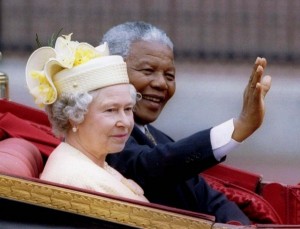
Mandela spent his early childhood in the Transkei being groomed to become a chief. He matriculated at Healdtown Methodist Boarding School. He actually completed his junior certificate in two years instead of the normal three years.
He proceeded to study for Bachelor of Arts at Fort Hare University, there he met former ANC leader, Oliver Thambo. It was here he got involved in student politics, after participating in a student protest in 1940. Mandela was later sent out of the university for his militant activism.
He, however, completed a B.A degree by correspondence in 1941 and began a law program which he didn’t complete.
Mandela left his village later to avoid a forced marriage. He moved to Johannesburg where he met another anti-apartheid crusader, Walter Sisulu.
He joined the African National Congress (ANC) in 1944 and was engaged in resistance against the ruling National Party’s policies. Together with Sisulu and Thambo, Mandela participated in the founding of the African National Congress Youth League in 1944.
He qualified as a lawyer and in 1952 opened a law firm in Johannesburg with his partner, Oliver Thambo.
PRISON LIFE
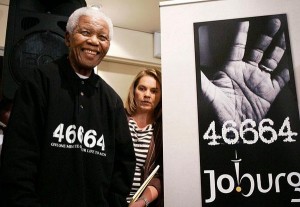
Mandela was tried for treason from 1956 to 1961. He was later acquitted that year (1961).
He argued for the emergence of a military wing within the ANC after they were banned in 1960. ANC adopted violence in June 1961. This led to the formation of Umkhouto we Sizwe (Spear of the Nation). On account of this, Mandela was arrested in 1962 and sentenced to five years imprisonment with hard labour. And accused of plotting to overthrow the government by violence, he faced trial with fellow ANC and Umkhonto Sizwe leaders.
Mandela and eight of the accused were sentenced to life imprisonment on June 12, 1964. He was in prison from 1964 to 1982. Mandela was incarcerated at Robben Island Prison, off Cape Town, thereafter, he was at Pollsmoor Prison.
Mandela’s fame grew stronger in prison as he refused to give up the struggle for the freedom of his people
FREEDOM AT LAST AS PRESIDENT
Nelson Mandela was released on February 11, 1990. In 1991, at the first national conference of the ANC held in South Africa after the organization had been banned in 1960, Mandela was elected president of the ANC, while Oliver Thambo became the organisation’s national chairperson. In April 1994, the Mandela-led ANC won South Africa’s first democratic election. He was sworn as the president of the country’s first multi-ethnic government.
Offering his nation exemplary leadership, Mandela midwifed South Africa’s first post-apartheid constitution. He had earlier set up the Truth and Reconciliation Commission (TRC), which investigated human rights violations under apartheid.
Mandela didn’t seek for re-election. He was rather succeeded by Thabo Mbeki in 1999.
MANDELA’S INTERESTING LOVE LIFE
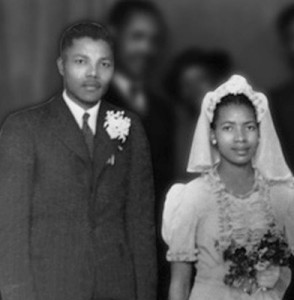
With three children, 17 grandchildren and 12 great grandchildren, Nelson Mandela was every inch fruitful. But his marital life was tortuous and rather complicated.
Mandela had three women who helped him waltz through his destiny. In the 40s, the legend married Walter Sisulu’s cousin, Mathona Evelyn Mase, who was a nurse. They had two sons: Madiba Thembekile (Thembi) and Makgatho and two daughters both called Makaziwe. The first died in infancy. They got separated in 1955 and divorced in 1958.
Mase, who came into the picture when Mandela was being pressured to marry another woman against his will, was from the same area with him.
Winnie Madikizela was married to Mandela for over three decades before their shocking separation in 1996.
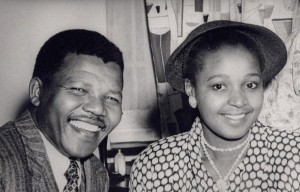
His biographers say it was indeed a true love story tempered tragically by political ambitions of its two larger-than-life protagonists. Their treasured moments are adequately captured in their letters while Mandela was in and out of prison.
Mandela’s third and last marriage was to Graca Machel in 1998. He wedded Graca, the widow of Mozambican late president, Samova Machel on his 80th birthday in 1998.
There is also another authentic love story involving the late anti-apartheid crusader and Amina Cachalia, widow of veteran ANC activist, Yusuf Cachalia. She claimed in her biography that Mandela proposed to her after his 27 years of imprisonment and the end of his marriage to Winnie.
Amina’s children, Ghaleb and Coco did confirm she had confided in them about Mandela’s marriage offer.
In the book, Amina who is of Indian origin gave a vivid description of private visits to her apartment by Mandela and her visits to his office and residence.
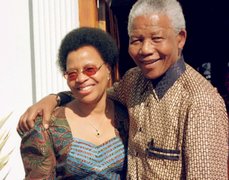
Her story: “On one of these visits I must have been looking rather flustered as I bustled about my chores. Mandela sat me down on the two-seater couch in the living room and kissed me passionately. Running his fingers through my hair, he said, “Do you know that you are an exceptionally beautiful, vivacious and enticing young lady?”
I hollered at him. He looked very worried and wanted to know what was so wrong with what he had said. I replied gently: “I’m not a young lady; I’m a middle-aged woman.”
He looked relieved and said: “Okay, let’s begin again.”
Then he repeated the string of adjectives, substituting “old” for “young” lady. I screamed again and said that I was not an old lady either,” she revealed.
Amina in the book, When Hope and History Rhyme, recalled one evening when Mandela visited her apartment in Johannesburg. She prepared crayfish for him, which he did not eat, as he was upset on being rebuffed. “That night Nelson declared his love for me in no uncertain terms. I resisted, reminding him of his marriage (to former Mozambican First Lady, Graca Machel) and the fact that while I may have been moved to consider his overtures positively, his marriage to Graca prevented me from doing so,” Amina wrote.
“I was free, he was not. He was clearly upset. I had hurt his feelings and resisted his advances. I begged with him to stay for crayfish but he brushed my pleas aside and walked out of the door.”
On a visit to Mandela’s Houghton home the next day, Amina revealed how Mandela sat opposite to he and wrote notes to her, which said beautiful and endearing things to her.
MANDELA’S UNFORGETTABLE LEGACIES
Liberating the people of South Africa from Apartheid remains the greatest legacy of Nelson Mandela. And building on the ruins of the oppression of his people, former President Mandela also erected institutions and structures that made life better for all South Africans.
Also in terms of exemplary leadership, the late leader, roundly voted the most visionary and selfless in Africa, also refused to be intoxicated by power. He didn’t seek second term or manipulate the constitution to elongate his tenure.
Mandela instead concentrated in selling South Africa to the world as Africa’s leading light.
HIS BATTLE WITH DEATH
 Nelson Mandela was stubborn to no end. Even on his death-bed, he refused to give in to its threat. Before his demise, he was in and out of hospital.
Nelson Mandela was stubborn to no end. Even on his death-bed, he refused to give in to its threat. Before his demise, he was in and out of hospital.
He had a number of issues with his health, the most debilitating being chronic lung infection as a result of his long incarceration. He was also infected with tuberculosis while in prison. He was hospitalized in January 2011.
Mandela had earlier fell in 1988 towards the end of his prison years. On admission, tuberculosis was diagnosed. He had been treated for prostate cancer in 2001 as well as other health issues. He began to grow frail in recent years and scaled down his schedule of public appearance.
Mandela’s last public appearance was in July, 2010, when he attended the final match and closing ceremonies of the World Cup held in South Africa. He had retired from public life in 2004 due to illness after earlier bowing out of politics at 85.
Mandela’s health crisis cropped up again early this year. In March 2013, his lung infection recurred and he was briefly hospitalized in Pretoria. On June 8, his medical condition worsened, and he was re-admitted in Pretoria.
On June 22, 2013, it was reported that Mandela was no longer responding to treatment. The next day, South African President, Jacob Zuma announced that Mandela’s condition had become critical. He was later placed on life support. By July 4, David Smith, a lawyer acting on behalf of Mandela’s family claimed in court that he was indeed in a permanent vegetative state and life support should be shut off.
South African government would deny this, insisting Mandela remained in “critical but stable condition” and was responding to treatment.
Winnie Madikizela-Mandela added her voice days back, confirming her ex-husband was battling with death in his living room turned intensive care unit.
The bell tolled for Mandela on Thursday, December 5 as he passed on, leaving behind everlasting legacies.
THE WORLD MOURNS
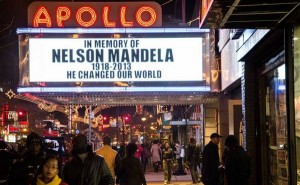 From US President, Barack Obama, United Kingdom’s Prime Minister, David Cameron to Nigeria’s President, Dr. Goodluck Jonathan, the world has been mourning the loss of Nelson Mandela.
From US President, Barack Obama, United Kingdom’s Prime Minister, David Cameron to Nigeria’s President, Dr. Goodluck Jonathan, the world has been mourning the loss of Nelson Mandela.
He was even described by Isreali Prime Minister as the most honourable figure of our time.
In his tribute to the iconic leader, UN Secretary-General, Mr. Ban Ki-Moon said he was “a giant for justice.”
“No one did more in our time to advance the values and aspirations of the United Nations.”
African leaders also hailed Mandela as the greatest of the greatest.
MANDELA’S BURIAL PLAN
According to South African President, Jacob Zuma, Nelson Mandela would be buried on Sunday, December 15, 2013. Madiba’s body will lie in state for three days in Pretoria before a state funeral in Qunu, the village in East Cape where he was born. He would be buried in Mandela’s family burial ground.
A black hearse carrying Madiba’s coffin, draped in the South Africa national flag left his home in Houghton, a suburb of Johannesburg on Friday, December 7.
South Africa, according to the official release, will observe ten days of mourning before the burial.
To be attended by world leaders, there would be series of memorials kicking off on Tuesday, December 10, when the official memorial service will be held at the FNB Stadium in Johannesburg. It is 100,000 capacity stadium. From December 11 to 13, Mandela’s body will lie in state at South Africa’s seat of government Pretoria’s Union Buildings.
Said to be the biggest funeral since Winston Churchill, Mandela’s coffin reportedly have a glass top for viewing.
Westminster Abbey will also hold a national service of thanksgiving for the life of Mandela after the state funeral in South Africa. A book of condolence opened at St. Margaret’s Church at the Abbey on Friday, December 7.
-UCHE OLEHI


